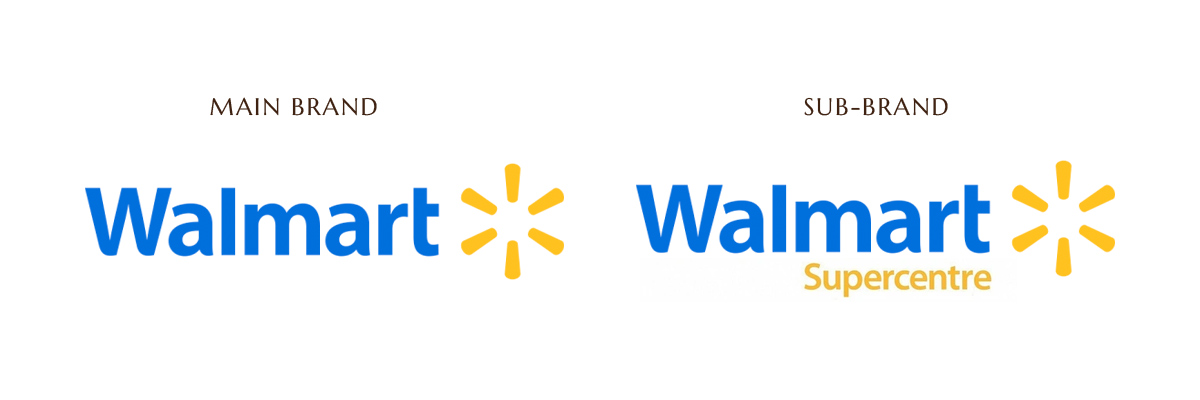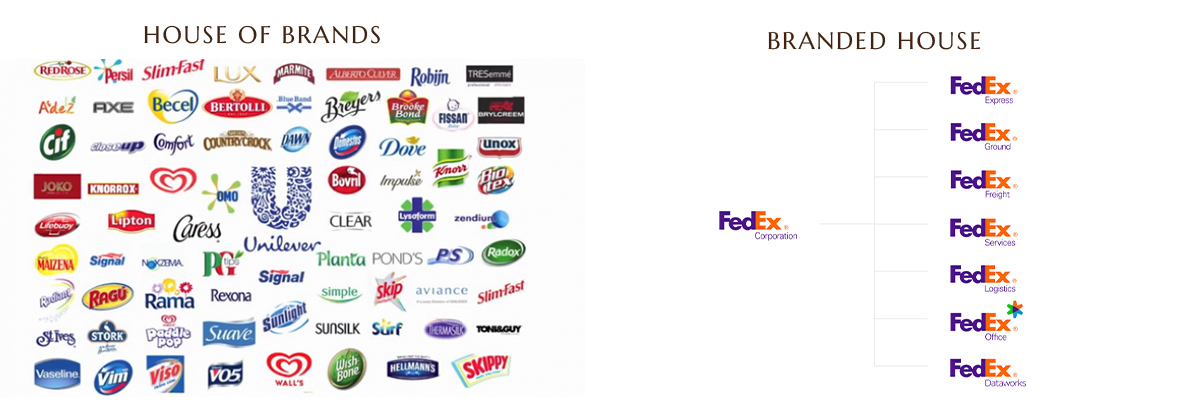Branding is a powerful tool. It helps you build meaningful connections with your audience, drives company culture and strategic decision making, and even affects your overall ROI. But the impact of branding isn't reserved for your company alone. In fact, many businesses create secondary brands—or sub-brands—for their offers as a way to uplevel their marketing and make a more lasting impression on their audience.
So, what exactly is a sub-brand and how can you create one for your latest course, podcast, or other digital product? Here's everything you need to know to get started.

Sub-Branding Basics
A sub-brand is a separate but related brand that a company creates in order to connect more deeply with a specific audience. Although the sub-brand has its own unique identity, it shares fundamental aspects of the parent brand's personality, such as its logo, color palette, or messaging. This allows it to reach a more targeted segment of its audience—or even a new set of potential customers—while still benefiting from the established reputation of the parent brand.
For example, Walmart created its sub-brand Walmart Supercenter to appeal to suburban households looking to buy everything they need all in one place. The sub-brand's logo keeps the parent brand's font, colors, and spark symbol, but adds the word "Supercenter" in gold letters.

By creating a distinct logo that shares many of the parent brand's characteristics, Walmart is able to show customers that its Supercenters have something unique to offer while still maintaining the commitment to low prices that it's most known for.

Motivations for Creating a Sub-Brand
There are many different reasons to create a sub-brand, particularly when launching a new offering, such as a digital product, podcast, or online course:
- You want to market to a specific part of your audience.
Sometimes, you create a new offering that's meant for only a certain part of your overall audience. A great example of this is Coca-Cola and their sub-brand Diet Coke. In order to appeal to more health-conscious customers, Coca-Cola created a product with the same signature taste but less sugar and fewer calories. - You want to offer something that's outside of what your audience normally associates with your brand.
When you're an established brand with a particular reputation, launching a product that's outside of your audience's expectation could negatively impact the relationship you've worked so hard to build with them.For example, Disney has long been known for its family-friendly entertainment. When it wanted to venture into producing films for an adult audience, it created a sub-brand, Touchstone, that allowed it to expand its offerings without damaging its roots. - You want to appeal to new customers or enter a new market.
Often growth can mean expanding your portfolio to an entirely new market. Unilever, for example, has a range of sub-brands across totally different industries, including Dove personal care products and Ben & Jerry's ice cream. - You want to capitalize on a new trend or opportunity.
The latest trends can provide great opportunities for brands to launch new products and appeal to a wider audience. For example, the rise of veganism prompted Unilever to create a sub-brand for Ben & Jerry's non-dairy ice cream. - You want to set your product apart from those of competitors.
Branding is an effective way to build relationships with your audience and make yourself memorable, and there's nothing stopping you from leveraging that power to promote a new offering. For example, MailChimp branded their podcast, Lifecycle of a Business, in order to stand out from other business-related podcasts.

Advantages (and Disadvantages) of Sub-Brands
Whatever your goal in creating a sub-brand, it's important to think through the advantages and disadvantages before you invest time in the branding process. While there are certainly many benefits, there are also some important risks to consider.
Advantages
One of the most significant advantages of creating a sub-brand is that it allows you to engage both new and existing audiences while taking advantage of the relationship of trust you've already built between your parent brand and audience. Rather than nourishing connections from scratch, you can build off of those that already exist.
Another benefit of sub-branding is that it helps you evolve with the changing needs and motivations of your audience. Whether they're looking for a different type of solution or have an entirely new problem they need to address, creating a sub-brand can help you continue to serve your audience, no matter what.
Disadvantages
On the other hand, creating a sub-brand can require a significant investment in new assets, marketing channels like social media and SEO, and more. If you don't have the resources or a solid plan in place to handle this growth, then a sub-brand may not be the right choice for your business.
In addition to the investment aspect, it's also important to consider how the success (or lack thereof) of your sub-brand could affect your parent brand. There's always a risk that your sub-brand—no matter how well developed—could get lost in your parent brand's shadow. Or, conversely, a poor outcome for your sub-brand could damage the reputation of your parent brand.
5 Tips for Creating a Sub-Brand
Once you've decided that sub-branding is the right course of action for marketing your new online course, podcast, or digital product, it's time to dive into the process!
While many aspects of creating a sub-brand look the same as the basic branding process, adding a new brand to your business means added considerations in order to ensure that both your sub-brand and parent brand are successful.
Sub-Branding Tip #1: Get Clear on Your Purpose
Before you get into the nitty gritty work of creating your sub-brand, you first need to get clear on why you're doing it in the first place. This is an essential step, because without this understanding, you'll have a difficult time defining its identity, designing assets, and developing a brand strategy.
Here are some questions you can ask yourself to help clarify your purpose:
- What are the characteristics of your current target audience?
- What does your audience expect from your products and services?
- Are there specific audience segments that you can't reach with your existing brand?
- Would your new offering correspond with your existing brand identity?
- Does a new sub-brand pose any risks to the success of your existing brand?
- How will the sub-brand impact your existing customer journey?
Sub-Branding Tip #2: Choose Your Brand Architecture
Creating a sub-brand means adding a new entity to your business. But what the relationship between your sub-brand and parent brand looks like and how they work together is entirely up to you.
In general, there are two different models to choose from for your brand architecture:
- House of Brands: In this model, each of your brands operates independently, without an outward association with each other or the parent brand. This is a good option for businesses who want to create products in different industries or niches. A common example of this model is Unilever (mentioned earlier), which has a range of sub-brands with relatively distinct identities, including Dove, Axe, Lipton, and Ben & Jerry's, among others.
- Branded House: In this model, all of your brands operate under a parent brand umbrella. In this case, the sub-brands are clearly connected to the parent brand, which makes it a good option for businesses who want to offer products that are in some way related to what their audience has come to expect from them. A business with this model you might be familiar with is Fedex, whose sub-brands include FedEx Express, FedEx Ground, FedEx Freight, FedEx Logistics, and FedEx Office.

Sub-Branding Tip #3: Define Your Identity
Once you have a clear understanding of your purpose and have chosen your brand architecture, you can move forward with defining your sub-brand's identity. This includes not just visual elements like your fonts, logos, and color palette, but also your brand messaging and values.
Your choices will largely depend on the relationship you've defined between your sub-brand and parent brand. If the two are meant to be clearly linked, your values and the way you communicate with your audience will likely be the same, or at least somewhat similar. Whatever the connection, the most important thing is that your values resonate with your target audience.
In terms of design, you can signal a relationship between your sub-brand and parent brand by maintaining the same (or compatible) typography and fonts. This will help establish a visual connection between the two, even if other elements are distinct. For example, each of FedEx’s separate sub-brands maintain the familiar typography and baseline logo, while varying the colors. Similarly, Virgin’s sub-brands are easily recognizable through the font they use.
Sub-Branding Tip #4: Develop a Promotional Strategy
A new digital product, online course, or podcast means developing a promotional strategy to build relationships, generate leads, and convert customers. But since your sub-brand has an identity all of its own, you'll need to be intentional about aligning your marketing with your branding.
Whatever assets you create—including web pages, social accounts, and other marketing materials—make sure that they create a cohesive picture of your sub-brand's identity and are distinct from your parent brand.
In particular, make sure you have a deep understanding of how your new sub-brand serves a specific audience segment. Everything from the content you develop to the photography you use should align with this segment of your audience. This is particularly important during an initial promotional period, where you have a chance to introduce something exciting and new to people who already know you.
Sub-Branding Tip #5: Create a Growth Plan
Last but not least, an essential part of creating a sub-brand is laying out a growth plan that takes into account your entire brand architecture. In order to ensure the successful launch of your sub-brand while contributing to the evolution of your parent brand, it's a good idea to think about how you can give your new digital product, online course, or podcast the space to grow while considering the bigger picture of your business.
Here are some questions to think about when creating a growth plan for your sub-brand:
- Will this brand be able to live on its own? For example, would you want to sell it in the future, separate from your parent company and other assets? This will help you define whether you need a House of Brands or a Branded House.
- What other future sub-brands do you envision creating, if any? Where does this newest one fit in? If it’s going to become a flagship offer, you’ll likely approach the process differently from if it’s going to be one of a series of equally important offers.
- Why are you creating this sub-brand? Are you trying to hyper-target a specific segment of your audience? Are you branching out to new segments?
- What, if any, market confusion might the sub-brand create? This consideration is particularly important when placing your new sub-brand next to what your main brand offers or stands for.
- How much time and resources will you need, and how much do you have to give? For example, if your new sub-brand requires a new set of social media channels, that will take a significant amount of time and energy.
Create a Strategic Logo for Your Sub-Brand
Your sub-brand’s logo deserves just as much attention as your main brand! Our upcoming Logo Design Strategy Masterclass will guide you through thinking strategically about your new design. You’ll learn how to capture the essence of your sub-brand and build deeper connections with your target audience.
Don’t want to miss out on our articles and insights?
Sign up for the Miss Details newsletter today.



